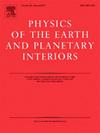The Cotentin peninsula is a region located on the northeastern edge of the Armorican Massif (France) that hosts several nuclear and radioactive waste facilities. A recent publication raised some issues regarding the source parameters of the 1926, Jersey earthquake, one of the key reference earthquakes for assessing the seismic hazard at the nuclear sites. In this study, we performed in-depth analyses on both the instrumental and macroseismic data to reappraise the source parameters. While the instrumental epicentral location was fairly well constrained at about mid-distance between the Jersey Island and the Cotentin peninsula, the focal depth could not be retrieved due to the resolution limits associated with a sparse seismological network and to the uncertainties on the phase picking. Different MS formulations applicable for moderate magnitude events recorded at regional distances were implemented to better account for the epistemic uncertainties, resulting in an estimation of MS equal to 5.1 ± 0.3. Regarding the moment magnitude MW, we performed a broad series of waveform modeling accounting for a broad set of source parameterizations and signal processing techniques. The magnitude MW of the Jersey earthquake is estimated to 5.4 ± 0.3 although these evaluations are strongly influenced by the period range adopted to fit the observations. We also carried out the evaluation of both MS and MW magnitudes by modeling the macroseismic field with results (MS = 5.1 ± 0.3; Mw = 5.3 ± 0.3) that are consistent with the instrumental estimates. Regarding the focal depth, the macroseismic analyses shed light on this parameter, even though the results depend on the assumption made on the presumed epicentral intensity (∼18 km for I0 = VI-VII and ∼ 12 km for I0 = VII).



